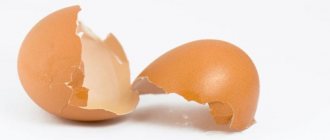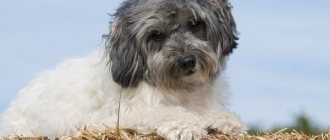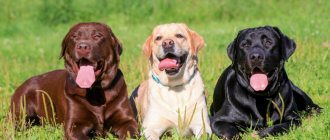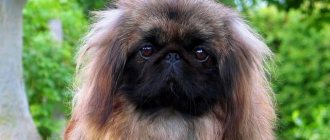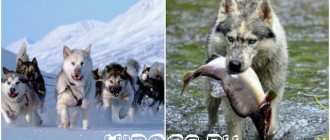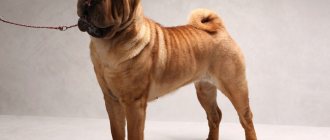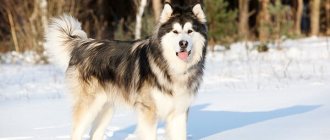Bichon Lyon, Louchen, small lion dog (French Petit chien lion) is an old French breed of dwarf dogs, which, thanks to the traditional haircut, look like a miniature king of animals with cute eyes and a lush lion's mane. The fur remains on the face, neck and tip of the tail.
The first mention of this breed was found in the 14th century in France, in the city of Amiens, in the form of sculptures in the crypt of St. Firmin.
Despite the unpretentiousness of this breed in maintenance, there are a large number of nuances that the future owner should know before purchasing a Lowchen.
This article reveals all the pros and cons of this breed, character traits, and also describes the subtleties of keeping, nutrition, care for both the dog in general and specifically for the coat. She will tell you what you need to pay attention to first when choosing a dwarf lion puppy.
Appearance of a Bichon Lyon
The Lion Bichon dog is a dog with the proud silhouette of a lion, although in size it is slightly behind its “relative”. A strong dog with well-developed muscle mass. Weight ranges from 2 to 8 kilograms. Height at the withers is on average 20–30 centimeters, in rare cases 35 cm.
The chest is voluminous, wide, sloping, the back is straight, the stomach is tucked. It has a small, wide head, proportional to the body, with a flattened muzzle.
Purebred Lowchens have a black or dark brown nose without pigmentation. The neck is long. The eyes are medium-sized, dark brown or black, round in shape, not protruding. The ears are medium sized, hanging down, and evenly covered with long, thick hair. The tail is medium in size, with a tuft of hair at the tip, raised up. A tuft of hair touches the dog's back.
| Weight | 2-8 kg |
| Height at withers | 20-35 cm |
| Head | Small, with a flattened muzzle |
| Eyes | Dark, medium size |
| Nose | Black, no pigmentation |
| Ears | Hanging, not long |
| Wool | Long, spirally twisted, thick |
| Tail | Curled to the back, medium length |
The coat is soft, slightly curly. The most common colors of the Bichon Lyon are black, white, fawn, and blue. It is less common to see a dog with spotted fur.
The haircut, unique to this breed, gives it the shape of a lion. The hind limbs and the base of the tail are cut very short, leaving a torch-shaped bun at the tip. The body and head are covered with thick fur, reminiscent of a lion's mane.
History of the origin of Lövchen
The history of the origin of the Löwchen dog breed (small lion dog, or Lyon Bichon) is still a matter of debate among experts. Scientists believe that the ancestors of this breed were known to the world already in the 2nd century. These include the Epagnole and the Great Dane. The small lion dog itself was presumably bred in the 13th–14th centuries. This is evidenced by the images of small dogs with manes carved on the stone of the Amiens Cathedral. In the 14th century they are found in the works of such artists as Durer, Goya, Cranach. Animals were in demand among high-ranking ladies and emphasized their high social status.
Presumably the ancestors of the little lion dog are the Epagnole and the Great Dane.
World wars caused a sharp decrease in the number of this breed, which pushed breeders to literally recreate small lion dogs bit by bit. Scientists in France, Belgium and Germany selected outbred lapdogs similar to Löwchen and crossed them with poodles to improve the quality of their coat.
Significant dates in the history of the development of the breed
On November 18, 1947, a breed club was created in France. In 1960, the Lövchen was recognized as an endangered species and is therefore included in the Guinness Book of Records. In 1961, the breed was recognized by the Fédération Cynologique Internationale and was assigned the number 233. The current breed standard was published on March 24, 2004.
The first historical monument to the existence of Bichon Lyons is a painting by Francisco Goya depicting the famous Duchess of Alba and her miniature dog
Lifespan
The lifespan of a Bichon Lyon depends on its owner. With a balanced, high-quality diet and good and proper care, “little lions” can live up to 18 years. The average life expectancy is approximately 12 - 15 years.
Prone to the following diseases:
- Cataract;
- Patella dislocation;
- Progressive retinal atrophy.
Character
Bichon Lions are calm and cheerful dogs that are distinguished by their sociability and exceptional loyalty. Thanks to their developed intelligence and good memory, they are easy to learn and train.
A high level of intelligence allows lion dogs to learn basic commands and even some tricks. Bichons do best when performing agility tasks and following their owner's instructions. However, such successes are achieved only with careful education and the presence of undeniable authority of the owner.
The character of Lowchens is playful and cheerful, but not overly active.
Attitude towards children and others
The dogs are very friendly. They get along easily and find a common language with young children. They, like children, are very cheerful, mischievous and energetic. They easily make contact with new people and quickly get used to the new environment.
They get along without problems and are friends with other animals. This is one of the breeds that really needs attention and affection. They love active walks in the fresh air. Without this, the dog begins to be sad, bored, becomes capricious and attracts attention in any way. Always tries to please and not upset the owner.
They are very obedient and easy to train. Learning basic commands needs to start at an early age. The older the dog, the more difficult it is to train. It is important to teach the dog to stand still; this skill will be necessary when performing a haircut.
Despite its small size, this miniature dog has a ton of courage and bravery. She can stand up not only for herself, but also protect her owner. This behavior of the little protector is nothing more than an expression of fidelity, devotion and love for the owner. Can become a good friend and family member.
8.Chongqing
This dog breed is not only ancient, but also rare. Their historical homeland is China, but there are not many of them here either.
Chinese Chongqing dogs are very friendly, calm, courageous, loyal and fearless. This rare breed was once loved by emperors.
A developed sense of smell helped to quickly find prey when hunting. It is better not to keep such a dog in an apartment; putting it on a chain is also not recommended.
Since this breed is distinguished by selfishness, independence and loves to control its territory. To get a Chinese bulldog you will have to spend a lot of money.
Price: $3,500.
Since the breed is not very common.
Keeping a Bichon Lyon
The Bichon Lyon is one of those dogs that is not adapted to life outdoors in a kennel or enclosure. In cold weather, due to the specific haircut, the pet must wear special clothing.
They bathe when dirty and wash their paws and belly after each walk. He doesn't like too long walks. 2 - 3 hours a day, divided into 30-40 minutes, for example, is enough. This should not just be walking on a leash, but active games with special dog toys or just a stick from a tree. The owner must give himself completely to the dog during the walk.
Coton de Tulear
The second name of the breed is Madagascar Bichon. The Bolonki Islands arrived from France in the 17th century.
There is a legend that after a shipwreck near the port of Tulear, several dogs survived and bravely swam across the rest of the strait and ended up on the island, where they mixed with aboriginal mongrels. This is how we got the unyielding, brave, fearless Bichons - Coton do Tulear (the first part of the name translates as “cotton” from French)
Like all Bolonki, Cotons are small (up to 28 cm at the withers), stocky, dense, but graceful and graceful, with long ears, a high tail and a royal posture. Their distinctive feature is long gray or ashy spots among the curls of flowing, wavy white coat. Due to their short, thick limbs, Tulears have to jump with four legs rather than two.
Animals will follow their master into fire and water. They are ideal companions with good physical fitness, hardy, courageous and cheerful. Dogs know how to adapt to their owner: they are ready to entertain children, relax with an elderly person, go for a run in the morning or lie on the couch all day.
The breed is hardened by hot climates and work, so Cotons still exhibit survival instincts to this day. They can strangle a rodent or bark at a stranger
It is important for them to protect the owner and his property.
Dogs are valued for their intelligence, willingness to train and learn. But if training is not started on time, puppies become fearful, withdrawn and uncommunicative. The average cost is 35,000 rubles.
Care
The most difficult element of caring for Levchens is caring for the dog's coat.
To maintain its beauty and silkiness, it is combed every day with a special brush, moving from roots to ends. The comb should not be hard or have rough bristles. For such dogs, a wooden massage brush with rounded teeth at the end is suitable.
The skin is quite delicate, and if you hurt the dog, brushing will cause fear in the future. Therefore, this procedure should be taught from an early age, slowly. If this is not done, so-called tangles may appear from the matted fur. There are two ways to deal with them. Either carefully, without pulling, try to untangle it with your hands, or cut it with scissors. It is necessary to trim your dog as its fur grows back.
Caring for your ears is very simple. Once a week, you need to clean your ears with a special ear cleaner, which can be purchased at a veterinary pharmacy, or with a 3% hydrogen peroxide solution. Apply ear cleaner to a cotton pad or piece of cotton wool and remove wax and dirt from the base of the ear to the edge.
Nails are trimmed once a month with nail clippers. You need to trim the claws very carefully, holding your pet firmly in place. Only the tip of the claw is trimmed without touching the vessel. Before trimming your nails for the first time, it is better to consult a specialist.
Grooming a lap dog at home
You can also care for Maltese fur at home. To do this, you will need to buy high-quality tools, study the rules and techniques of cutting, but the main thing is to hone your skills in practice.
Preparation for the procedure
Before cutting a Maltese, you need to bathe it with shampoo and a special balm for easy combing. Afterwards, the animal needs to be dried with a hairdryer in the direction of hair growth and combed, getting rid of all tangles. At this stage, the dog is completely ready for further grooming.
To fully groom your dog, you will need the following tools:
- combs and slickers for combing wool before and during the procedure;
- well-sharpened hairdressing scissors;
- clipper (it is better if the tool is specifically for animals, and not for cutting people, otherwise it may simply not cope with the delicate fur of a lapdog);
- nail clipper;
- cotton pads for ears.
Procedure for cutting
The haircut itself should take place in several stages:
- The dog needs to be seated on a surface that is comfortable in height for the groomer.
- It’s better to start with the bangs - move the desired length away from the eyes and cut off the cap.
- We trim or shave the space between the ears, making sure the result is symmetrical.
- The next stage is cutting the back. Here you also need to focus on the desired length of the finished hairstyle. If you need to cut your dog’s hair as short as possible, then this result can only be achieved with a clipper against the growth of the hair; in other situations you need to work according to the growth.
- Now you can process the sides, starting from the place between the muzzle and the ear, moving to the neck and further along the body.
- Once the sides are trimmed, the limbs can be processed.
- The next stage is the tail. It is usually enough just to trim it a little.
- Be sure to remove excess hair between the paw pads and in the ear. At this stage, trim the claws and clean the ears with cotton pads dipped in warm water.
- Now you can start trimming your ears. In order for everything to turn out smoothly, you need to comb the wool and pinch the line along which you plan to cut with your fingers.
- All that remains is to shape the muzzle. To make the lines smooth and beautiful at the end, thinning scissors are used along the edge of the cut.
The algorithm for grooming a puppy is no different from caring for an adult dog. The only caveat is that babies are usually cut with scissors and not short, but only by trimming the ends and giving a beautiful shape to the coat.
Possible mistakes when cutting your own hair
It is unlikely that you will be able to cut your dog's hair perfectly the first time; this will require a lot of practice. The most common mistakes when cutting hair at home:
- Household scissors. No ordinary scissors, even well-sharpened ones, will give a beautiful cut on a dog’s fur - they will tear it, wrinkle it and pull it. It is necessary to invest in a professional tool that will be convenient to use.
- Lack of example. The best option is to take your dog to a professional for grooming several times and observe his actions. Then your independent haircut will be more confident and of better quality.
- Household hair clipper. An ordinary machine, especially if it is expensive, simply will not take the delicate hair of a lapdog. It is necessary to purchase a tool designed specifically for cutting animals.
- Radical solutions. If you have a fluffy dog, you should not immediately go to extremes and cut it very short - there is a high probability that the result will not suit the owner and will create stress for the animal. It is better to start with light, hygienic haircuts and, if necessary, gradually shorten the animal’s hair to the desired length.
Show Maltese dogs are usually not cut short; a long, well-groomed coat is important to them. But pets outside of show activities are often given hairstyles, ranging from simply trimming long hair to completely cutting it off.
Nutrition
For different ages of dogs, a specific diet and feeding frequency are selected. But in any case, nutrition should be balanced, rich in macro- and microelements. The further development of all organs and systems depends on how the dog eats for the first year.
Vitamins, macro- and microelements should only be prescribed by a qualified veterinarian.
| Puppy age | Diet and number of feedings |
| 1-2 months | Feeding 5 – 6 times a day. Kefir, boiled milk, thick milk porridge, low-fat cottage cheese, vegetables, fruits. |
| 2-4 months | Feeding 4 times a day. Well-cooked and finely chopped meat is added to the diet. You can make salads from vegetables and fruits, seasoning them with sour cream or olive oil. |
| 4-8 months | Feeding 3 – 4 times a day. Sea fish is added to the already introduced products. Feeding 3 – 4 times a day. Sea fish is added to the already introduced products. |
| 8-14 months | Feeding 2 – 3 times a day. All of the above products. |
| From 14 months | Feeding 2 times a day. |
You need to make sure that the dog does not overeat, but also does not remain hungry. A portion of food should be eaten “sneaky”. If after feeding the dog whines, behaves restlessly, and licks the bowl, then you need to increase the portion.
Dogs are prohibited from feeding tubular, bird and fish bones! When chewed, tubular bones break into small, sharp pieces, which can lead to injuries to the esophagus, gastrointestinal tract, and even death of the animal.
Dogs are also not allowed the following foods:
- Sweet, flour, chocolate;
- Spicy, fried, salty;
- Sausages;
- River bony fish;
- White bread, pasta;
- Semolina, pearl barley, potatoes;
- Juices, drinks.
You need to take the temperature of the food you serve your dog very seriously. It should be neither hot nor cold. The dog is fed according to a schedule at the same time, in the same place. The animal should have its own feeding area, with a bowl of clean drinking water. It is best to choose dishes from food-grade plastic or ceramics.
Reviews
A few reviews:
- “I spent a long time choosing between a poodle, a lap dog and a small lion dog and settled on the last one. She's simply gorgeous. My Kerry is crystal white, very affectionate and tasteful. She chooses her own outfit and if she doesn’t like the suit, she starts growling.”
- “I bought a bichon for my daughter, if I had known how much money would be spent on this dog, I would have bought a lap dog. She needs her hair done and a new sweater to order from the dressmaker. It’s like I have two daughters now.”
Pros and cons of the breed
The positive aspects of this dog breed include:
- Suitable for people with allergies, as it practically does not shed. And due to the lack of undercoat, there is no characteristic dog smell;
- Easily trainable;
- Does not require long walks;
- Affectionate, friendly and cheerful character;
- Gets along great with children.
Disadvantages of the breed:
- Regular hair care (combing, trimming);
- Prone to food allergies;
- Greater predisposition to cataracts;
- They require a lot of attention.
Health
According to the description of the breed, lion dogs are characterized by good health and are not prone to disease. Frequent exposure to cold or wind can lead to problems with the respiratory system and cardiac activity.
A proper diet and careful care will protect your pet from most illnesses. Bichons must be regularly vaccinated against dangerous infections, as well as anthelmintic prophylaxis.
Diseases
The Lesser Lion Dog has a genetic tendency to:
- retinal atrophy;
- cataracts;
- heart and respiratory failure;
- joint dysplasia.
Vaccinations
The health of the Lyon Bichon dog breed depends on timely vaccination. The dog is vaccinated against diseases such as:
- rabies;
- plague;
- parvovirus enteritis;
- parainfluenza;
- leptospirosis;
- hepatitis.
The first vaccination is given to Little Lion Dog puppies at the age of 7 weeks. Subsequently, vaccinations are carried out according to the schedule established by the veterinarian. Most often they are prescribed three more times:
- at 9 weeks;
- at 11 weeks;
- at 1 year.
After this, comprehensive vaccination of Bichons is repeated annually, as well as in the period preceding mating.
How to choose a puppy
Before buying a Bichon Lyon puppy, you need to carefully weigh the pros and cons and thoroughly study the characteristics of the breed and how to care for them. You also need to clearly understand for what purpose the dog is purchased (for exhibitions, for breeding or as a favorite pet). Depending on the purpose of the purchase, the nursery and age of the puppy are selected.
You need to be very responsible when choosing a nursery. The premises in which puppies live should be bright, clean, ventilated, and free of unpleasant odors. The breeder should definitely ask about the purpose of the purchase to help with choosing a puppy. Also, a good breeder will definitely give recommendations on the nutrition, care and education of a young lion cub.
It must be remembered that each puppy must have a veterinary passport with information about vaccinations and anthelmintic measures.
It is not recommended to adopt a Bichon Lyon puppy under 3 months old.
Observe them before choosing a puppy. Puppies should not show aggression, cowardice, or be lethargic and depressed. Be sure to ask the breeder about the health of the parents and genetic diseases.
Japanese miniature poodle
The body size of these animals is so tiny that an adult specimen of the breed can easily fit into a simple tea cup. The dog weighs only 1.5 kg. The Japanese miniature poodle is very popular in Tokyo, although only the wealthiest Japanese can afford one, because a puppy of the breed costs about $5,000.
Those who dream of getting rich quickly by breeding these animals will have to come down to earth, since this income is really not easy. In addition to investing money in buying an animal and subsequent maintenance, you will have to spend a lot of time on care and a lot of nerves, worrying about the life of the Japanese Lilliputian.
Photo: tobelady.ru
Application
Several centuries ago, lowen served as living warmers for wealthy palace ladies, who constantly kept them with them. And the short leonine haircut enhanced the heat transfer from these babies. Currently, the Bichon Lion is used only as a decorative companion dog.
The unusual appearance of lion dogs attracts attention at canine exhibitions, looks good in photos, and due to their high cost, the animals are perceived as a sign of luxury.
Offspring
In Russia, finding a Small Belgian puppy is not a problem. However, it is better to buy a future pet in nurseries or from breeders.
It is advisable to take a puppy that is 2-2.5 months old. The cub must be healthy, active and curious. It is not recommended to buy a baby with excessive aggression or fearfulness.
Pedigree, veterinary passport and age-related vaccinations are required.
Puppy cost
The average price of a griffon puppy is 40-50 thousand rubles.
Interesting fact
These dogs have a funny breed feature - they snore softly in their sleep.
Mating
The first estrus in a female is observed at 6-12 months, lasting 7-14-28 days. The pet should be bred after reaching 15-18 months. Successful days for mating are considered to be 10-14 days from the date of the start of estrus. However, some bitches are ready for fertilization at 5-6 days or much later, around day 19.
Before mating, pets are walked but not fed. Mating takes place in the boy's territory. Control mating – after 1-2 days.
Pregnancy lasts 56-72 days, litter contains 4-5 puppies
Description
The Small Belgian Dog (or Griffon, Stable Griffon) is a section of three toy dog breeds.
It includes:
- 1
Brussels. - 2
Belgian. - 3
Brabant (or Petit Brabencon) Griffon.
In ancient times, tiny dogs were used to protect homes, kill rodents, and simply as a pet for people of different classes - aristocrats and commoners. Nowadays they are pets and participate in exhibition shows.
Peculiarities
All three varieties of griffons are descended from the small wire-haired dog Smousje, which no longer exists but once lived in the vicinity of the Belgian capital.
They differ from each other only in color and type of hair. The Brussels and Belgian Griffons are characterized by a mustache and goatee on their muzzle, which are absent in the Brabant.
Interesting fact
The name “stable griffon” comes from the fact that in the past, miniature dogs spent most of their time in a carriage, accompanying their owner on trips.
Distinctive features
Head
The head is round, large and wide. The frontal part of the skull is convex. The muzzle is brachycephalic type with wrinkles, flattened. The transition line from the forehead to the muzzle is clear.
Teeth
The teeth are white and sharp. The lower jaw is noticeably pushed forward, forming an undershot.
Ears
The ears are erect, small, located high, hanging on the cartilage.
Eyes
The eyes are large, round, not protruding, widely spaced. The color of the iris is dark brown. The look is mischievous and curious.
Frame
The body is proportionally developed with a strong skeleton. The back is straight, short and strong. Croup with a slight slope.
Limbs
The legs are straight, parallel, and slightly long in relation to the body. The paws are small, round in shape with tightly clenched toes.
Wool
Brussels - hard, wavy with a red or red-brown color and a black mask. The undercoat is thick and fluffy. The Belgian has a short, double-wiry coat that is black or black and tan. Petit Brabarcon - smooth hair. Color: black, black and tan, red or red with a black mask.
Interesting fact
Despite the presence of the word “griffon” in the name of the breed, the Little Belgian actually belongs to the group of schnauzers and pinschers.
Character
The Griffon is an incredibly energetic and charismatic animal that is ready to play pranks and play at any time of the day. By nature he is often a little arrogant and cocky.
He cannot stand loneliness at all and immediately begins to feel sad. Especially in the absence of the owner, whom he adores and loves with all his little heart.
The pet is extremely loving with his household, but the owner is still considered the most important thing in the world. With school-age children, it's a big deal.
He willingly participates in all children's pranks, the dog especially likes noisy and active games. However, relationships with children do not work out, since they perceive the little man as a rival.
He gets along well with other pets, but is wary of other people's pets and can even bark. Despite its miniature dimensions, it willingly takes on the duties of a home security guard, announcing the arrival of guests in a ringing voice.
In training and education, he is a diligent student, but subject to a consistently structured educational process, therefore, there must be firmness and exactingness on the part of the owner. Use treats and praise as encouragement.
Standard
At the time when experiments were carried out to improve the species, much attention was paid specifically to the visual resemblance to lions. It was to the head that the greatest number of demands were made
The head should be relatively short, but at the same time quite wide. The body is small, compact, curly. Llamas are small, rounded. The tip of the nose is pigmented black. The eyes are round, the iris is dark. Small ears are in a hanging position, abundantly covered with hair. The tail is long, thin, low-set, and curved so that the tip touches the lower back. The coat is wavy, but curliness is considered a fault. Quite thick and long
It is important that its length does not interfere with the animal’s walking. Any color is accepted except brown and the entire palette of this color. Average weight is six kilograms. Maximum height is thirty-two centimeters.
When we talk about this type of lapdog, the external resemblance to wild large predators is placed at the forefront of their entire image. A haircut is required for them, and if you want to preserve their natural uniqueness, then the hairstyle must be appropriate. Otherwise, all the tenderness and attractiveness of these lovely creatures is lost.
Interesting Facts
- A romantic and tragic story is the story of a dog named Bijou. In the 18th century, a little lion lived in the German castle of Weilburg. When his owner went hunting, Bijou began to sunbathe, he did not understand why he was not taken with him. Bijou tried to get out of the castle and catch up with the owner - he jumped from a 25-meter wall and crashed.
- It is believed that this Lewchen is more often than other breeds present in paintings, from the Renaissance to the 17th century. After which she began to disappear, and not only from paintings.
- In the middle of the last century, there were no more than a dozen purebred Levchens left. As a result, in the 60s, the breed was included in the Guinness Book as the rarest decorative dog.
- Levchen is one of the few dogs whose breed standard includes a type of haircut. At the same time, the standard not only specifies that the dog should be cut, but also specifies the style of its hairstyle.
- A unique fact is that the style of dog grooming has changed little since the 15th century.
